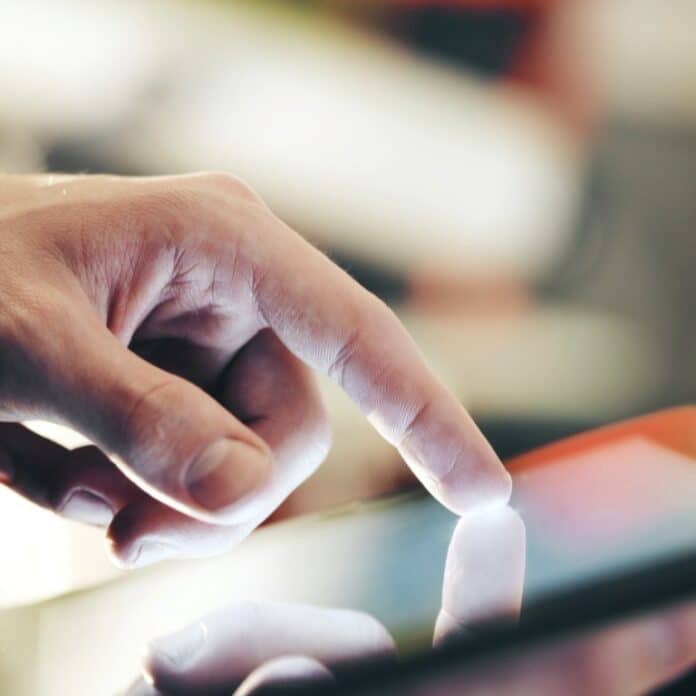Dopple presents five ways the phygital transformation has and is taking shape across business verticals in the retail industry.
Why Do Phygital Experiences Make An Impact?
In the past 100+ years of marketing, there have been countless innovations. Marketers have gotten better at creating efficiency in their efforts, but the one thing that has not changed is marketing’s reliance on human behavior to drive results.
Marketing is psychology, and the psychology behind phygital is that when humans interact with something, whether it is a place, a person, or a physical product, they:
- are more likely to recall that experience at a later date;
- form an impression and even an attachment to that thing.
For example, test drives for cars serve a dual purpose. It allows the potential buyer to test out the car but it also increases the amount of time the buyer spends with the car. This increases the chance that the buyer will envision themselves driving and enjoying the car, thus increasing the likelihood of a sale.
Phygital experiences create the same type of response by triggering memory and attachment between the buyer and the brand. Whether that attachment is built on convenience, unique value proposition, or a general appreciation for a product, pairing digital and physical touchpoints to create better brand experiences has proven effective, and promises to generate further results in the future.
Five ways the phygital transformation has and is taking shape across verticals.
Omnichannel
At the heart of the phygital movement is the concept of delivering a consistent and valuable brand experience across channels. While omnichannel has become a popular discussion among marketing strategists, many brands have only scratched the surface compared to the capabilities that exist to deliver against evolving consumer demands.
As highlighted by Paul Prior in a 2021 Forbes article, phygital is omnichannel. Consumers interact with brands across a growing number of channels, and if a brand’s channels are competing or conflicting with one another, the results are counterproductive.
Contactless Service
If retail had a theme in 2020, contactless would be a prime contender. When the COVID-19 pandemic led to major shutdowns and a need for social distancing, brands and retailers had to get creative to deliver their products and services to consumers. Contactless services (such as curbside pick up and QR codes) emerged as key business tools, and have remained popular among both businesses and consumers as retail has evolved over the last two years.
Before the COVID pandemic, QR codes were largely unknown or considered an irrelevant and forgotten technology. However, QR code uses include everything from menus to augmented reality, and consumers’ willingness to adopt their use has spurred a renewed interest in how to use them for innovative and effective brand experiences.
In light of the phygital revolution, QR codes stand as an easily accessible and distributable trigger for linking digital and physical locations and experiences. QR codes placed in physical places can be used to provide additional information on products, or to activate a specialty experience or offer for a brand. Codes deployed on the web can be used to bring a physical product into a consumer’s home in the form of an AR powered digital twin.
Virtual Reality
If asked about experiences that blend the physical and digital worlds, a majority of consumers will likely think first of virtual reality (VR). While the most mainstream applications of VR are limited to gaming and entertainment, an increasing number of brands have demonstrated interest in the technology’s ability to engage consumers.
Brands such as Audi and Lowe’s have deployed VR experiences to educate consumers on products, while American Express made an impression at the 2015 US Open by allowing visitors to face off against tennis great Maria Sharipova.
VR brings a digital world to the user, most often through the use of headsets which remove the user’s true surroundings to enhance the experience. Tools such as the Oculus headsets or the HTC Vive place the user directly into the digital realm, allowing the designer to create an immersive, phygital experience that is more likely to leave an impression on the user. For a brand, that impression can translate to greater retention of information, higher brand affinity, or even increased sales.
Augmented Reality
While VR brings the user into the digital realm, augmented reality(AR) alters or enhances the user’s physical location with digital elements. The elements are most often activated via a mobile device, with users viewing the altered environment on their screen.
The largest advantage for AR over VR is the lower barrier of entry, as far more consumers own a mobile device capable of acting an AR experience, compared to those who own VR headsets or other equipment. Additionally, This also means that AR is often more mobile, triggered by a link or a visual and not requiring additional equipment to be transported place to place.
Social media filters are the most common AR application accessed by consumers. In fact, 63% of Snapchat’s daily active users utilize AR filters, and branded filters have demonstrated significant business results for brands in a variety of verticals. A 2022 AR try-on campaign by Ulta generated $6 million in sales and over 30 million virtual try-ons during the two- week campaign.
The success of AR in commerce is not limited to the social sphere, however; data from Shopify shows that AR- enabled product pages drive 94% higher conversions than those without, and 66% of consumers are interested in using AR for shopping.
Among the fastest growing applications of AR in commerce is home design, allowing designers and consumers alike to view furniture, decor, and even paint colors in a space to see how the item will look in the space. Home design site Houzz has seen 11x conversions on products enabled with an AR viewer compared to the non AR products, as well as more than 2x the time spent on the app.
Additional data shows that product pages enabled with augmented reality drive 2x the average order value, and up to 30% decreases in returns.
Read Snapchat Launches a Halloween AR Shopping Experience
Metaverse
Despite the immense amount of discussion surrounding the metaverse, few agree on what the next digital frontier will look like, or how it will affect the daily life of the majority, if it affects them at all. However, it is safe to say that the momentum driving towards the metaverse has spurred many innovations that are making the phygital world feel more real.
Phygital creation is at the core of the metaverse, and the potential of the many tools, technologies, and applications is only beginning. In many ways, one could argue that the metaverse is the epitome of a phygital world. Whether that might means meetings are conducted in a virtual conference room with avatars instead of in-person or over Zoom, or if travel to far off places becomes more accessible due to a digital copy, phygital creation is at the core of the metaverse, and the potential of the many tools, technologies, and applications is only beginning.
As consumers become more familiar with the technologies that enable “phygital” experiences, the desire for these elements to be the standard among brands will grow, and brands not willing or able to deliver will feel the pinch of changing consumer desires.
Read What is the Real Opportunity of the Metaverse?
Dopple Augmented Reality Platform
If you’re ready to get phygital, learn more about Dopple’s augmented reality platform. They can help you create an immersive online shopping experience that keeps customers coming back.
Read more: Treasure Data Survey Reveals Best Retail Strategies for 2022









